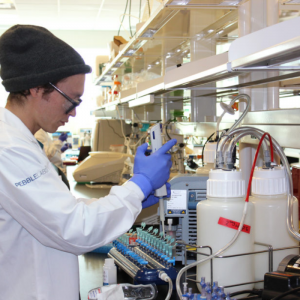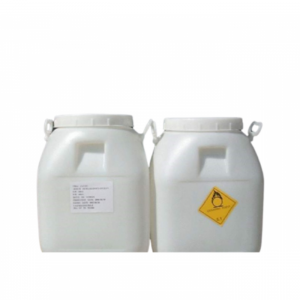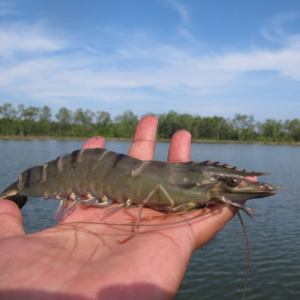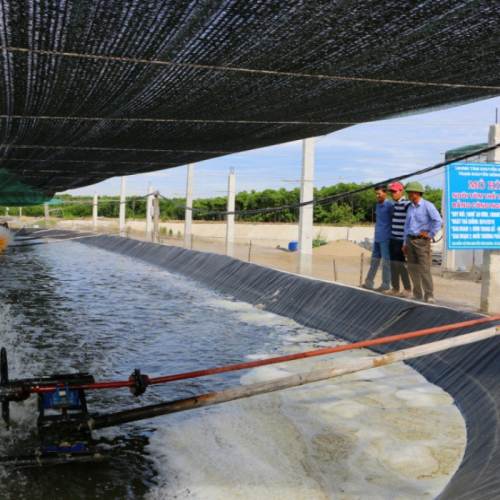
Biotechnology Applications Without Antibiotics, Chemicals in Shrimp Culture
| Thu, 26 Sep 2019 - 16:41
The overuse of chemicals and antibiotics in intensive shrimp farming has now disrupted ecological balance and adversely affected the environment, poor product quality and the retention of banned chemicals and antibiotics. barriers in exporting Vietnam shrimp to the world market. The application of biotechnology in commercial shrimp farming is now considered an indispensable support solution for the stable and sustainable development of industrial shrimp farming.
I. Use of probiotics (Probiotics)
Currently on the market there are many types of probiotics with many different brands. However, the most commonly used probiotics, low cost, high efficiency and easy to apply for shrimp farmers are EM (Efective Microorganism).
1. The role of EM preparations
In animal husbandry and aquaculture:
- EM works well for all species of pets, all species of aquatic animals.
- Increase the resistance and resistance of livestock to adverse external conditions; Improve the ability to digest and absorb pet food; Increases reproductive stimulation of pets; Increasing production and quality of livestock; inhibition of harmful microorganisms; Limiting environmental pollution.
Also read: Probiotics in Aquaculture
In environmental protection:
When spraying EM into garbage, sewers, barns, ponds, ... will eliminate odors quickly; reduce the number of flies, mosquitoes, insects in the environment; deodorizing organic waste and speeding up humus; prevent the process of causing rot and mold in preserving agricultural products; High efficiency, environmentally safe and cheap price.
2. How to produce EM2 from original EM
- Procedure: (with a 50L container)
Sterile the containers; Add 46 liters of fresh, clean water; Add 1kg molasses, stir well; Add 2kg of rice bran or cornstarch, stir; Add 10 g of table salt, stir; Add 1 liter of original EM, stirring; Cover anaerobic incubator for 7 days.
For larger volumes (100L, 200L, 500L, etc.), the increase in raw materials is proportional to the increase in volume.
- Usage:
+ Water treatment: 50 liters of EM2 / 1,000 m 3 of water; Handling pond: 10 liters EM2 / 1,000 m 2 pond; Use periodically in ponds: 50 liters EM2 / 1,000 m 3 of water, during the first month of farming every 5-7 days, the 2nd month use 3-5 days / time, the 3rd month onwards 2-3 days / times; Use to treat odors: Use EM2 aerosol directly on the surface where the odors are born.
3. How to produce EM5 from original EM
- Raw materials:
1 liter of original EM; 1 liter of molasses; 1 liter of vinegar; 2 liters of wine.
- Procedure:
Use a covered lid, clean and disinfect; Order of input materials: 2 liters of wine → 1 liter of vinegar → 1 liter of molasses → 1 liter of original EM → stirring → tightly closed; Anaerobic incubation for 3 days. Dosage used: 3.5 liters EM5 / 1,000 m 2 .
- Usage:
Treatment of pond bottoms: 5 liters EM5 / 1,000 m 2 ; Water treatment: 4 liters EM5 / 1,000 m 3 , every 7 days, when large shrimp increase the number of uses.
Also read: Probiotic Capacity of Pseudovibrio Denitrificans Isolates From a Marine Sponge
4. How to produce EM garlic from EM5
- Raw materials:
1 liter EM5; 1 kg pureed garlic; 8 liters of clean water
- Procedure:
Use a covered lid, clean and disinfect; Order of ingredients: 8 liters of water → 1 kg of pureed garlic → 1 liter of EM5 → stirring → tightly closed; Anaerobic incubation for 24 hours.
- Usage:
Prevention: 1 liter EM garlic + 10 kg of food, compost after 1 hour, feed periodically; Treatment: Use a double dose, feed continuously for 7-10 days, then return to the preventive dose.
5. How to produce EM bananas from EM2
- Material:
1 liter EM2; 1 kg of molded bananas, pureed.
- Procedure:
Use a covered lid, clean and disinfect; Order for the ingredients: 1 kg of pureed peeled bananas → 1 liter of EM2 → stirring → tightly closed; Anaerobic incubation for 24 hours.
- Usage:
1 liter of EM bananas + 10 kg of feed, compost after 1 hour, continuous feeding.
Also read: Can Probiotics Make Shrimp Farming More Environmentally Friendly?
6. Principles of using probiotics
- Do not use probiotics concurrently with antibiotics and bactericidal chemicals.
- Use the right dose, not as much as possible.
- Powdered probiotics should use dissolved pond water and strong aeration 2-4 hours before use to increase bacterial biomass.
- Water-based probiotics should be incubated anaerobic to increase biomass before use.
- The best microbiological treatment time is about 8-10 am, during the warm sunshine, clear sky and high dissolved oxygen content.
- Periodically treat microorganisms to maintain appropriate bacterial density in order to control biological environment of water and pond bottom, stabilize environmental factors, prevent pathogenic bacteria, toxic algae and pathogens latent in the pond.
* Environmental factors affecting the efficiency of using CPVS:
- O xy dissolved: aerobes ( Bacillus ) and strictly aerobic bacteria (VK nitrate) to ensure adequate dissolved oxygen efficiently.
- Alkalinity, salinity: High alkaline water (80 - 150mg / l CaCO 3 ) → Stable pH, low alkaline water (50mg / l CaCO 3 ) → Fluctuating pH → reduced efficiency of microbiology short. Salinity is too high → causes death or inhibits the growth of microorganisms.
- Weather: Greatly affecting the growth of algae and water color → affecting the efficiency of using microorganisms. Use best microorganisms in the morning, when it's clear.
- Nutrition: It is necessary to add C to nitrate
bacteria to effectively reduce
N-NH 3 → NO 3 .
* Time and frequency of use:
- Should use microorganisms right from the beginning of the crop → high efficiency.
- From mid to end of crop → low efficiency.
- At the beginning of the crop 7-10 days to use once, from mid to late crop 3-4 days to use once.
* Dosage used:
- Use as directed by the manufacturer.
- Excessive use → ecological imbalance, reduced DO, irritated animals, stress.
- Use too little → do not work well.
Also read: Effect of Streptomyces Probiotics on Gut Microbiota of Pacific White Shrimp
* Culture of bacterial biomass:
- Some probiotics need to be cultured to increase the number of bacteria, anaerobic cultures are needed to avoid contamination.
- Some probiotics with high bacterial density do not need to increase biomass and can be used directly in ponds. However, it should be mixed with water and strong aeration for several hours before splashing into the pond.
* Other factors:
- Too many protozoa will eat bacteria → the density of microorganisms will decrease.
- Simultaneous use of biocides, antibiotics, water changes, ... will reduce the effectiveness of microorganisms.
7. The prevention and treatment of some diseases for shrimp by microbial products
• Shrimp floating head due to toxic gases:
- Dissolve 2-3 liters of original EM into 20 liters of water taken from the pond and then throw it into the pond at the first floating shrimp.
- Open fans running at full capacity.
• Shrimps with tail and stubble:
- Use 2 liters of EM garlic + 10 kg of food.
- Mix well and incubate for 4 hours.
- Feed the shrimp at the rate of 1kg / 100,000 postlarvae / day.
- Or use 50 liters of EM2 / 1,000 m 2 / day, use 3 times in a row with intervals of 2 days / time.
• Crumbled shrimp:
- Use 4 liters EM5 / 1,000 m 2 , use continuously for 5 days in the morning.
- When algae dies a lot → low pH → use lime to raise pH.
• Shrimp with white spot disease:
- Use 5 liters EM5 / 1,000 m 2 / day for 5 days in a row used in the morning.
- When shedding many stop using EM5 and uses 50 liters of EM2 / 1,000 m 2 /2 days, used continuously until the WSD descending (Thailand used effectively for over 10 years).
II. Biofloc technology
Currently many businesses are adopting Biofloc technology
and have very good results. Approaching Biofloc technology to improve the
biomass of microorganisms as feed for shrimps by adding C so that bacteria can
more fully utilize the source of waste N converted into biomass in Biofloc,
improving environmental management efficiency rearing ponds, reducing diseases,
reducing food intake.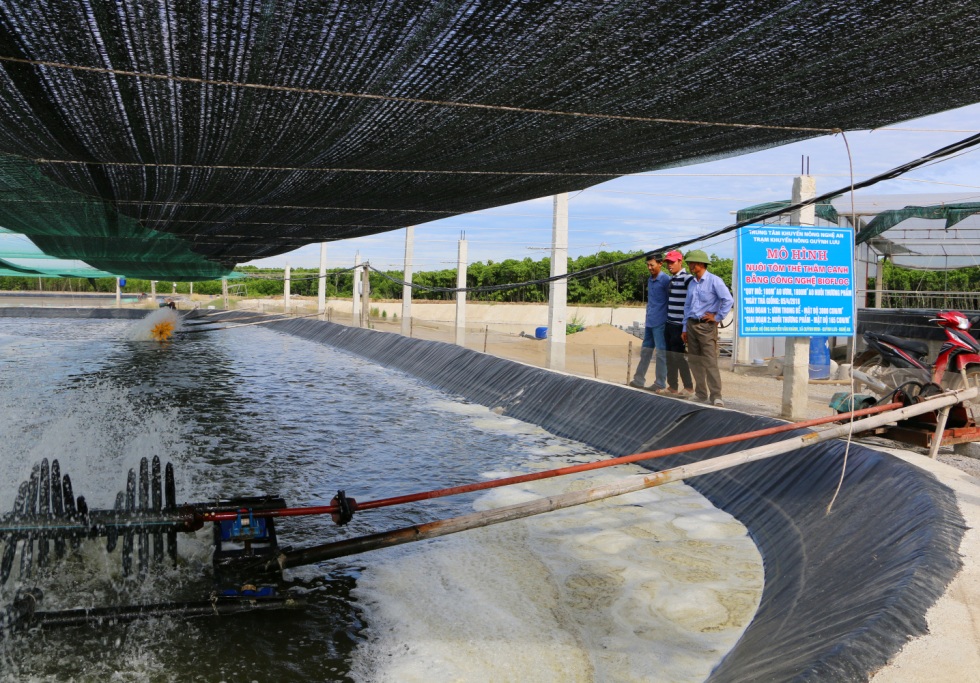
Biofloc components include: A mixture of heterotrophic microorganisms (floc-producing bacteria and filamentous bacteria), debris, colloids, biopolymers, cations, dead cells, crystal salts, etc. Biofloc also has microalgae (filamentous algae, silica algae), fungi, protozoa, zooplankton (rotifers), nematodes, etc.
Also read: Research Backs Value of Probiotics in Shrimp Ponds
Inducing Biofloc in shrimp ponds (2 . 000 m 2 ):
After supplying water from the settling pond up to the requirements, conduct Biofloc:
- Use 3 kg of food number 0.
- 1 liter of original EM or 0.5 kg of Ta-pondpro or other probiotics on the market.
- 3 kg of Stomi or N8 minerals, or minerals on the market.
- 6 liters of molasses.
Incubate after 24 hours into the pond. Every 2 days, repeat the process, after 7-10 days, Biofloc will come up and when using imhoff measuring cup to reach 3-5 mm, you will conduct stocking.
During the culture process, 0.6 liters of molasses / kg of feed were used to maintain the Biofloc density in the pond. When Biofloc content is too thick, reduce molasses to 0.2 liter / kg of feed.
Shrimp farming using Biofloc technology requires a large amount of energy to operate the aeration system. If the power outages within 1 hour can cause the situation of settling the entire amount of Biofloc in the pond. Ponds with this technology must be lined or made of cement. Biofloc technology requires higher technical training for technicians.
Applying biotechnology without using antibiotics and chemicals in commercial shrimp farming can manage water quality throughout the crop, minimize environmental pollution, control disease outbreaks, minimize risks, increase efficiency. use feed, reduce production costs, improve product quality, This is a solution for sustainable development of commercial shrimp farming on the sand.
Source : www.khuyennongvn.gov.vn













